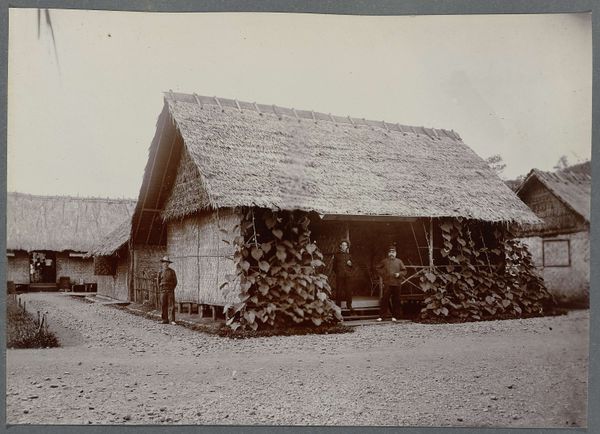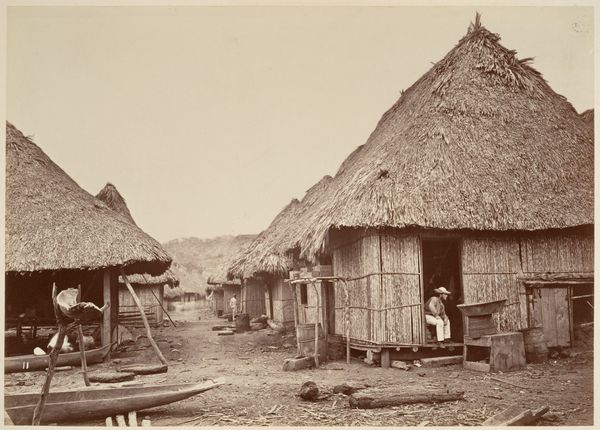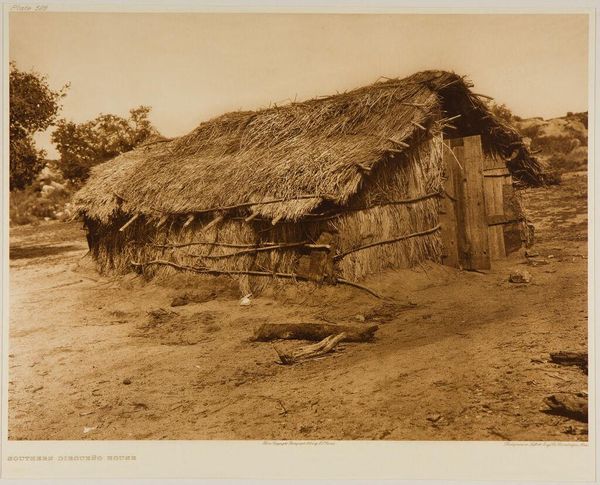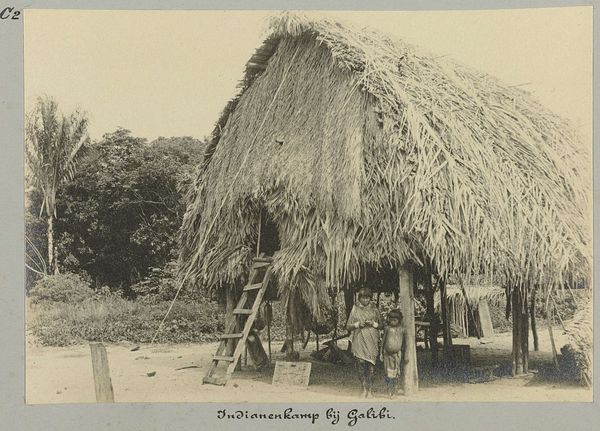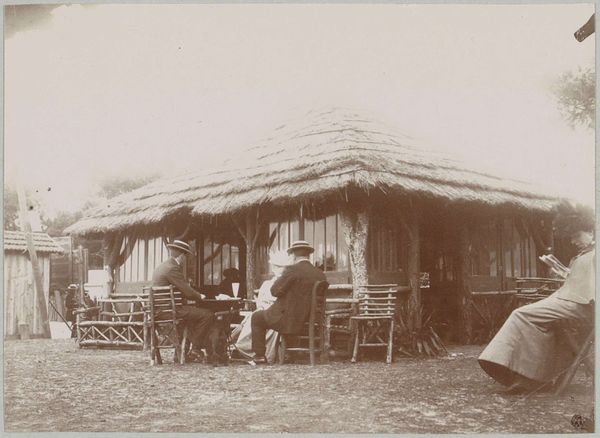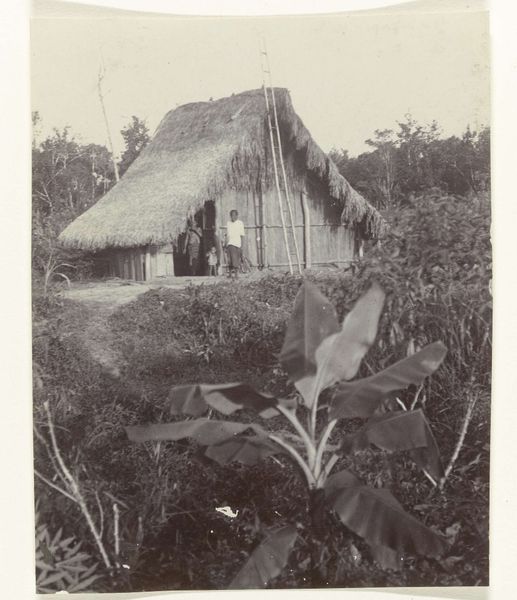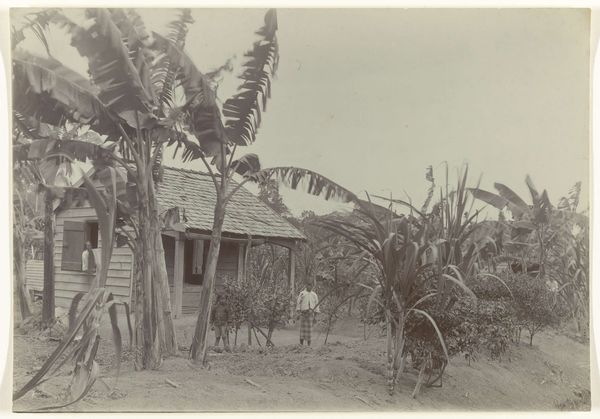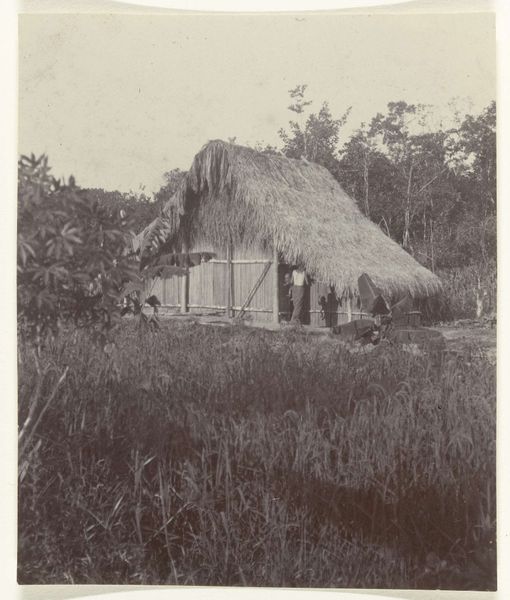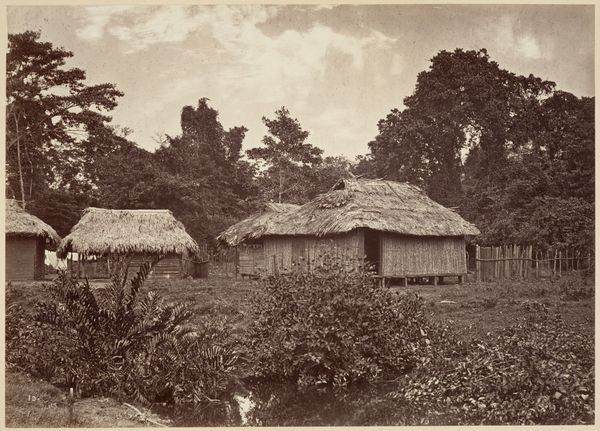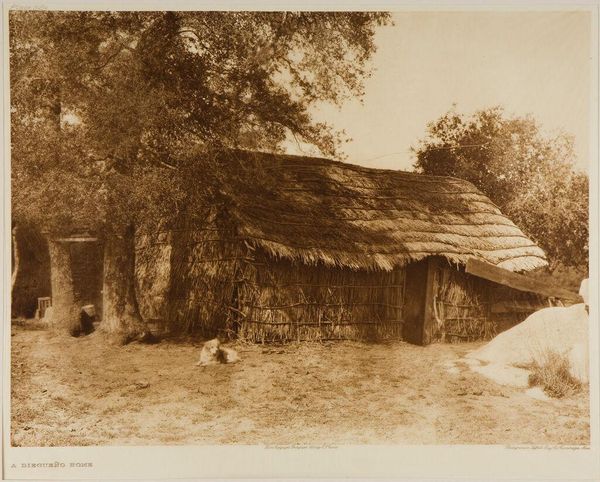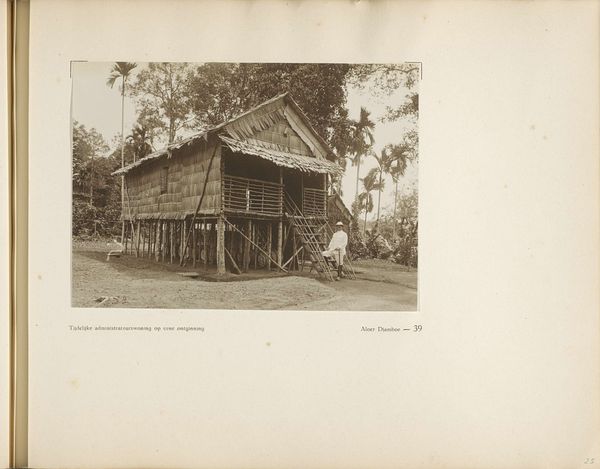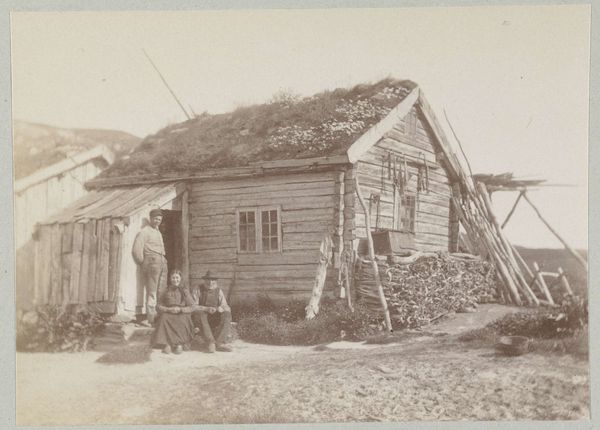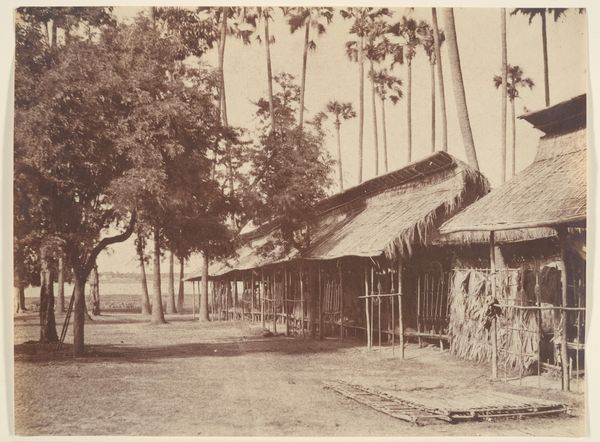
photography, gelatin-silver-print
#
portrait
#
landscape
#
photography
#
gelatin-silver-print
#
modernism
Dimensions: height 119 mm, width 165 mm
Copyright: Rijks Museum: Open Domain
Editor: So, here we have Augusta Curiel’s gelatin-silver print, “Jacob Evert Wesenhagen in zijn dienstwoning,” dating from around 1905 to 1910. It’s striking how the geometric precision of the dwelling contrasts with the surrounding, less structured landscape. What do you make of it? Curator: It's fascinating how the house almost becomes a character. Consider the recurring visual motif of shelter – the overhanging thatched roof echoes primal instincts and archetypes of home. But it's a very particular kind of home. The almost box-like structure, elevated off the ground, could symbolize a distancing from the immediate environment. Editor: Distancing, how so? Curator: Think about what elevating something means symbolically – power, protection, perhaps even a degree of isolation. Look at the man himself, positioned centrally. His posture, leaning casually against the railing, could be read as a signal of ease or conversely as detachment. The photo plays on binaries: cultivated vs. wild, insider vs. outsider, stasis vs. movement. The ladder offers connection, but also signifies the division that must be bridged. Does it suggest the man as a colonizer? Editor: I hadn't considered it from that angle. So, the image of the house, and the man, together present more than just a simple portrait. Curator: Exactly. It acts as a lens, a symbolic narrative reflecting the cultural and psychological relationships between man, dwelling, and the natural world, speaking of colonial legacies but also about home and belonging. Editor: Seeing it that way makes it far more resonant. Thanks for sharing your insights. Curator: My pleasure. It’s about how an image, even one that appears simple, can contain a multitude of layers.
Comments
No comments
Be the first to comment and join the conversation on the ultimate creative platform.

